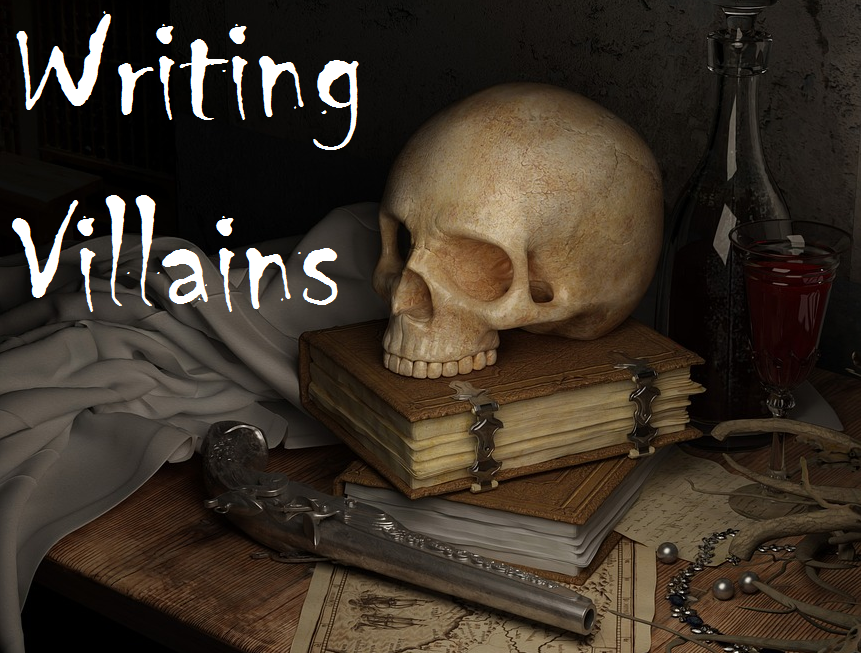
The villain or antagonist will usually play a crucial role in any good novel. So, after reading hundreds of novels and watching hundreds of films over the years, I decided to analyse some villains for myself. What exactly makes a good villain and do they fit into different categories? Well yes they do in my opinion, though it is likely that a memorable villain – just like any person – will fit into more than one category. With a little bit of research and reading, here are the six broad categories for different types of villains that I decided upon…
1] The Pure Evil Villain – A villain who is just evil for the sake of being evil, this may also include ancient evil or evil artefacts. There doesn’t have to be a logical reason or even a motive behind the actions for these types of villains, and pure evil villains tend to lack any form of compassion or empathy. Pure evil villains can never be changed; they exist to be evil and are evil because they exist. They are likely to cause chaos just because they can. Great examples of a pure evil villain include Sauron from J. R. R. Tolkien’s Lord of The Rings, Voldemort from J. K. Rowling’s Harry Potter and Flagg the Magician from Stephen King’s The Eyes of the Dragon.
2] The Psychopathic Villain – A villain who suffers from some sort of mental illness, though let’s be honest, we could probably find a mental illness for every villain. Like the pure evil villain, the psychopathic villain doesn’t necessarily have to have a logical reason or a motive behind their actions. However, their evil usually stems from their psychopathic tendencies. Although he also seeks power and rule, Jafar from Disney’s Aladdin is a good example. Not only is Jafar described as a narcissist and an emotional sadist but it is also implied that he enjoys torturing people and suffers from hysteria. Zachary Solomon from Dan Brown’s The Lost Symbol and The Joker from Batman are also examples of a psychopathic villain.
3] The Selfish Villain – A villain who is evil or commits evil acts due to a selfish ulterior motive. The selfish villain will commit evil acts for their own self gain and the majority of the time, they enjoy being evil. They are often exaggerated school bullies who love power and control over other people. The Warden from Louis Sachar’s Holes with her desire to find a buried chest is a great example. Count Olaf from Lemony Snicket’s Series Of Unfortunate Events, who seeks the Baudelaire Orphans’ family fortune is another example.
4] The Betrayed Villain – A villain who is evil or commits evil acts due to revenge. The betrayed villain may not have been a villain before being betrayed, but they become evil as a result. This type of villain often seeks revenge against the person who betrayed them and will more than likely go after someone who is innocent but closely affiliated with that person. An iconic example of this type of villain is Maleficent from Disney’s Sleeping Beauty. Maleficent seeks revenge against King Stefan by going after his innocent daughter Princess Aurora.
5] The Anti-Villain – Opposite of the Anti-Hero an Anti-Villain is an antagonist who may not be purely evil or unfeeling. They may have heroic goals, personality traits and/or virtues. The Anti-Villain will usually achieve their goals using immoral, unjust, or evil methods, however their goals often aid the protagonists or they end up saving the world/doing good themselves. Jorg from Mark Lawrence’s Prince of Thorns is an example of an extreme Anti-Villain, consider yourselves warned, Prince of Thorns is not for the faint hearted.
6] The Misinformed Villain – A character who may not necessarily begin as a villain/antagonist and may not stay a villain/antagonist throughout the entirety of the novel, but they commit evil acts due to one or all of the following; miscommunication, misdirection and false beliefs. Sometimes a character may become a temporary misinformed villain because they have been forcibly brainwashed, an example of this is Peeta Mellark from Suzanne Collins’ The Hunger Games series. Although not really a villain but still an antagonist, General Grigio from Isaac Marion’s Warm Bodies is another example. In the book version of Warm Bodies, General Grigio is a character who still commits wrongdoings due to strong false beliefs, even when presented with evidence which contradict his beliefs.
What do you think of my six broad villainous character types? Can you think of any more villains who fit into one or more of these categories? Or perhaps you know of a villain who fits into a completely different category? I want to know your thoughts and opinions, please leave any comments and questions below.
Thanks for reading – C.L.